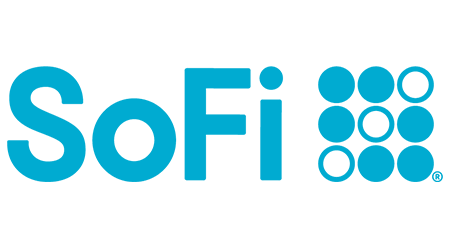
- 0.50% APY on checking balance
- Up to 3.80% APY on savings
- $0 account or overdraft fees
- Get up to a $300 bonus with direct deposits of $5,000 or more
You’ll find that you can carry both USD and the local currency, the Cambodian riel, to pay for sights and shopping as you venture through religious temples, sunbathe on offshoots of island covered by breezy trees and peruse the famed Central and Russian Markets in Phnom Penh. Most vendors accept both local and US currency, so there’s no need to exchange your cash when you arrive.
Like most countries in Southeast Asia, cash speaks loudest, so be sure to bring your debit card for ATM access when you need it. You can find ATMs at bank branches in major cities like Phnom Penh and Siem Reap and at the airports in those cities. If you’re heading to other places, stock up on cash before you head out since you probably won’t find many places that take plastic.



You can use USD in Cambodia, but if you plan to go to more countries or you want flexibility to pay in riels, you have other travel money options:
Credit cards make the perfect travel companion. You can make interest-free purchases, and there are a number of perks, like emergency card replacement, access to emergency cash and complimentary insurance to protect you, your family and the things you buy. Find a credit card that waives foreign transaction fees to save the most when you spend.
Take a preloaded travel card and withdraw USD from an ATM in Cambodia. Travel card ATM fees can be lower than debit cards — Cambodia is one country where a travel card can work in your favor.
The other choice is to use a debit card to get cash. There are a few travel-friendly debit cards for you to compare. Some debit cards waive international transaction fees, such as ATM fees and currency conversion fees. Checking accounts are free to open and won’t cost you anything unless you use the card.
There are many ways you can take your money to Cambodia, but the most valuable option will depend on your financial situation, spending habits and travel plans.
Credit cards are accepted in larger restaurants and hotels, and you’ll likely have to show ID to use them. Find yourself a travel credit card that waives foreign transaction fees, such as the Capital One VentureOne Rewards Credit Card (). Carrying a credit card gives you the added benefit of travel insurance and discounts, depending on your provider. For added savings, take advantage of the interest-free period by paying your balance in full each month.
Cards that offer travel perks and waive fees often charge an annual fee, so make sure the fee is worth it before you bring it along on your travels. If you’re ever in a jam, credit cards also offer cash advances, though we don’t recommend it. You’ll pay high fees and interest rates apply the moment you get your money.
Explore top debit cards with no foreign transaction fees and travel credit cards by using the tabs to narrow down your options. Select Compare for up to four products to see their benefits side by side.
We currently don't have that product, but here are others to consider:
How we picked theseThe Finder Score crunches over 300 checking accounts from hundreds of financial institutions. It takes into account the product's monthly fees, overdraft fees, opening deposit, customer support options, ATM network and features — this gives you a simple score out of 10.
To provide a Score, Finder’s banking experts analyze hundreds of checking accounts against what we consider is the best option: no monthly fees, no overdraft fees, a large ATM network of 50,000 or more, additional features outside of typical banking services, and the optional perk of earning interest. Accounts that are nearly free to maintain and use are scored the highest, while accounts with costly fees and few features are scored the lowest.
The Finder Score is a simple score out of 10. The higher a savings account's score, the better we think it is for the average customer.
We score each credit card in our database of hundreds based on a data-driven methodology with 3 main criteria: Does the card offer rewards? Does the card have an annual fee? What's the card APR%?
Debit cards are another way that you can take your cash overseas. Using your debit card for ATM withdrawals in Cambodia can lead to hefty fees since ATM owners charge steep fees per transaction. Find a bank that waives foreign ATM withdrawal fees, and spend the money you save on a guided tour. For example, using a Betterment Checking debit card means that you can reimburse these pesky international ATM fees within 24 hours of submitting.
Travel cards can lock in conversion rates once you load USD. Use it for purchases without worrying about rates each time you spend — debit and credit cards often charge a currency conversion fee of 3% for each transaction. But In Cambodia, because the US dollar is an accepted currency, you won’t pay the currency conversion fee.
Where you save in the conversion rates, you may pay in fees. You’ll pay fees each time you load the card, ATM withdrawals and sometimes even an inactivity fee.
You can bring US dollars to use in Cambodia, but if you run out of cash or would like to have it waiting for you upon arrival, you can use a money transfer company to get it there safely.
Security is the main advantage of using traveler’s checks. Each check has a unique serial number and can only be cashed with photo identification. Fees are the main disadvantage. Banks charge a fee to get a check and to cash them. You’re better off using a debit or travel card that lets you make cheap or free ATM withdrawals.
USD and KHR are both used in Cambodia. Buying an item worth $2.50 and paying with $5.00 gives you $2.00 in change and the rest in Cambodian riels. There are different exchange rates between riels and dollars used in Cambodia, too. $1.00 works out to be roughly 4,000 to 4,200 Cambodian riels.
For example:
If an item costs $1, pay $1 or 4,200 riels.
If an item costs 5,000 riels, pay $1 and 1,000 riels.
The value of a dollar changes between 4,000 and 4,200 riels depending on how you pay. Use riels to make smaller purchases to get the best price.
Live Rate
Refreshing in: 60s | Thu, Jul 24, 05:10 PM GMT
The riel has been issued twice in Cambodia’s history. During the Pol Pot period, the country did not have a currency.
 |  |  |
 |  |
You shouldn’t have any issues finding an ATM in the large cities that accept Mastercard and Visa issued credit, debit and travel cards. Note there are some ATMs that only accept Visas. Be sure to look for the Visa and Mastercard logos displayed on the front of the ATM if you’re unsure which cards the ATM takes.
The standard charge is approximately $5 per withdrawal. ANZ Royal charges the most and Bank of Canadia ATMs are the cheapest. Most ATMs dispense USD, while some dispense riels.
ATMs will dispense large denominations, which can be hard to change. Request an ATM withdrawal that includes multiples of $20. For example, instead of withdrawing $300, you can ask for $280. This way you get some smaller notes as well as larger notes.
You’ll want to stick with these banks when looking to withdraw cash in Cambodia. To avoid hefty foreign transaction and ATM fees, go with a Betterment Checking debit card in hand, which reimburses these international fees.
You’ll find your money will go far in Cambodia. You can spend anywhere from $15 to $100 a day if you budget properly. You’ll find that there are many vendors who are willing to negotiate prices — another way to keep costs down. All prices are in US dollars.
| Phnom Penh (capital of Cambodia) | Budget | Mid-range | Expensive |
|---|---|---|---|
Accommodation | Cheap guesthouse room $3.50–$10 | Air-conditioned hotel room $12–$40 | Boutique hotel or resort $30–$350 |
Meals | Local meals and street eats $1–$3 | Decent local restaurant meal $5–$10 | Fancy meal with drinks $20–$40 |
Transportation | Local buses $2 | Local tour guide per day $15 | 4WD rental per day $50–$100 |
Prices are approximate and are subject to change.
David and his friends spent three weeks in Southeast Asia: One week in Cambodia and a week each in Thailand and Vietnam. He visited Angkor Wat and Bayon Temple in Siem Reap and then headed to Sihanoukville on the coast. This is what he told us about using travel money in Cambodia.
What is your travel money recommendation?He says he didn’t have to worry about any purchases or ATM withdrawals with the Charles Schwab debit card. David said he liked the flexibility of not searching out a certain ATM when he needed cash.
Do you have any travel money tips?
David says that it’s always a good idea to tell your bank about your travel plans so it doesn’t think the charges are fraudulent and block your account.
What’s the best currency to take to Cambodia?
Take USD on your trip to Cambodia, as they are accepted almost everywhere in Cambodia. The official currency, riels, can not be exchanged back to US Dollars or other major currencies when you leave the country. Don’t bother getting your US Dollars changed to KHR, either. You will be given KHR as change when you pay for goods and services if the change is only a small amount.
Should I tip in Cambodia?
Tipping is appreciated but not expected. If you’re visiting a Wat (a temple), it’s polite to leave a small tip when you leave. Most Wat’s have a contribution box where you can leave a tip at the end of your visit. Otherwise, tipping is at your discretion. Leaving a tip for a taxi driver, a waiter, a cleaner or a guide is a good way to show your appreciation for quality service. Rounding up the bill or leaving an extra dollar (or two) will go a long way in a country where the wages are low.
How do I get a Cambodian visa?
You can apply for a Cambodian tourist visa when you arrive in the country via an international airport. You can also apply for an e-visa online, which can save you time to get through immigration. More information is available via government websites.
Back to top
How to pay, how much to bring and travel money suggestions for your trip to USA.
How to pay, how much to bring and travel money suggestions for your trip to New Zealand.
How to pay, how much to bring and travel money suggestions for your trip to Thailand.
How to pay, how much to bring and travel money suggestions for your trip to Vietnam.
How to pay, how much to bring and travel money suggestions for your trip to Mexico.
How to pay, how much to bring and travel money suggestions for your trip to Portugal.
How to pay, how much to bring and travel money suggestions for your trip to Germany.
How to pay, how much to bring and travel money suggestions for your trip to Ecuador.
How to pay, how much to bring and travel money suggestions for your trip to Canada.
How to pay, how much to bring and travel money suggestions for your trip to Japan.